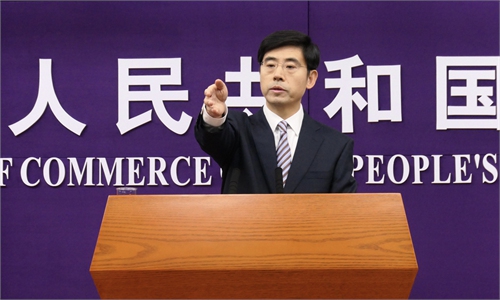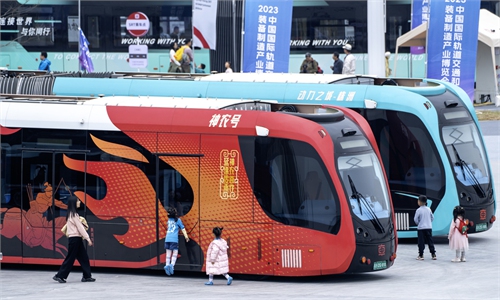
Economy growth Illustration: Chen Xia/Global Times
As we enter 2024, what lies ahead for the Chinese economy and its global trade have become hot topics in the arena of public opinion. In the new year, quick adjustments may provide people with new perspectives on China's foreign trade - the imports and exports of intermediate products.
He Yadong, a spokesperson of China's Ministry of Commerce (MOFCOM), told a press conference on Thursday that China is confident about maintaining the upward momentum in its foreign trade recovery, with the support of policies to stabilize the economy and foreign trade as well as the joint efforts of enterprises. His words, to some extent, set the tone for China's foreign trade development in 2024.
There will be both opportunities and challenges facing China's export-oriented sectors this year. The United Nations Conference on Trade and Development said in a report released on December 11, 2023 that the outlook for global trade in 2024 remains "highly uncertain and generally pessimistic," citing factors such as ongoing geopolitical tensions, escalating debt and widespread economic fragility. Policymakers in China have realized how serious the issue is, and are constantly updating their plans to adapt and respond to changing demand and conditions.
Signals released by the Central Economic Work Conference in December indicated that China's high-level opening-up will be expanded. It means that China will expand its domestic market, expand cooperation with emerging market countries, establish deeper trade relations with more trading partners, and consolidate its trade network.
In particular, it was stressed at the conference that in 2024, it will be imperative to foster new drivers of foreign trade, reinforce the stable performance of foreign trade and foreign investment, and expand trade in intermediate goods, trade in services, digital trade and exports of cross-border e-commerce.
As China's highest-level annual economic conference, December's conference provided a panoramic window to observe how the Chinese economy will embark on a new journey, in which trade in intermediate goods deserves special attention. Amid global economic uncertainty, intermediate goods are likely to be a highlight of China's foreign trade in the new year.
First, if one seeks what lies behind intermediate goods trade, there is an industrial transformation and upgrading. The manufacturing of intermediate products, including core equipment, components and raw materials, often requires cutting-edge technologies, intelligent manufacturing or technological achievements over new materials. Expanding intermediate goods trade will be part of China's transition from a "world factory" to a trading powerhouse.
In the past few years, Chinese policymakers called for continuous efforts to strengthen the core competitiveness of the manufacturing sector and bolster the modernization of supply and industry chains, in a major effort to promote China's high-quality development. This will be transformed into China's advantage in the field of intermediate goods trade in the future.
Second, efforts to expand intermediate goods trade will be conducive to consolidating China's position in global industry chains. As US partisanship becomes increasingly fierce, and ideological divisions are magnified, analysts share a common view that confronting China has become one of the few remaining consensus points among different political interest groups in the US.
As a result, Washington's economic "decoupling" or "de-risking" calls may grow louder in 2024. A complex external environment required China to further integrate into global industry chains, making itself into a global hub for intermediate products trade and an indispensable part of global supply chains. In this process, China will also make positive contributions to ensuring the stability of the world's industry chains.
Third, analysts expect more policy measures to be announced to expand trade in intermediate goods. As reported, China has announced plans to reduce or exempt tariffs on some resources that the country is experiencing shortages of, and some critical equipment and components, from January 1, which can be seen as a good start for China's foreign trade in 2024.
China is faced with external uncertainties as well as an increasing number of favorable factors for economic development. For China, the world's largest trading country, how it can transform its intermediate goods advantage into a driving force for trade growth in 2024 deserves attention. That will have positive and far-reaching impacts on global trade that are constantly evolving.



